Watch Sumo Wrestlers Battle It Out During a Grand Sumo Wrestling Tournament in Japan
Large and formidable. Sumo wrestlers are an iconic symbol of Japan, and wow with their stature and strength. Indeed, Rikishi — the Japanese term for ‘sumo wrestler’ — translates to ‘man of strength’!
What does it take to be a sumo wrestler?
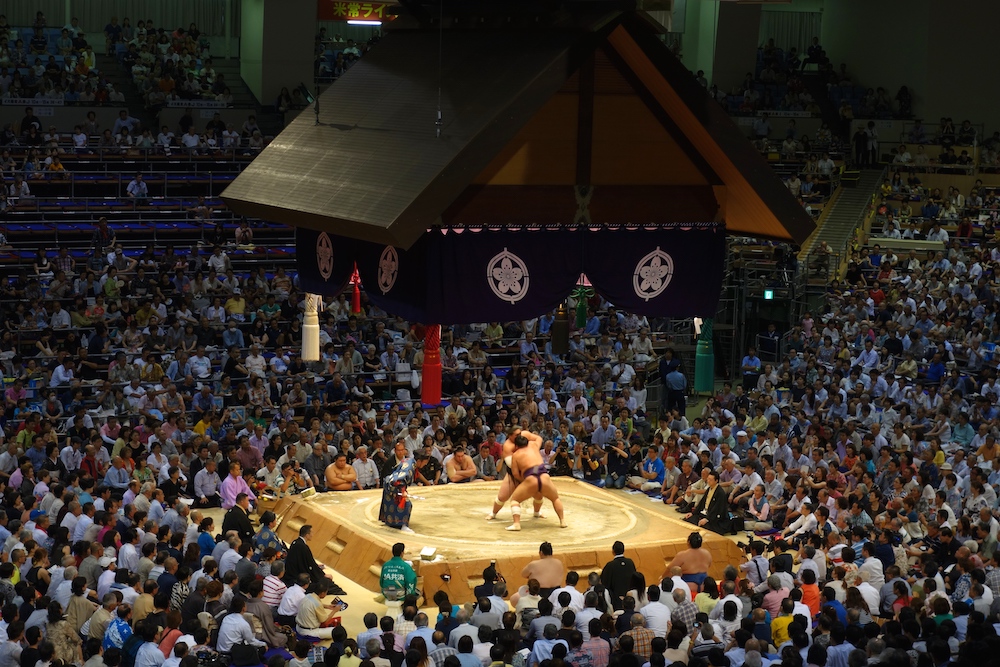
Being a sumo wrestler is no easy feat, mind you. They all live together in a sumo stable, where they train and sleep. Some stables allow an audience for the morning practices; however, there are strict rules, and tourists are required to attend with someone (a.k.a. a guide) who’s fluent in Japanese.
Fun fact: to maintain their size, sumo wrestlers consume around 2,000 calories a day! A popular staple of their diet is Chanko nabe, also known as ‘sumo stew’. It comprises a large hot pot, filled to the brim with protein and vegetables.
A little background about sumo wrestling
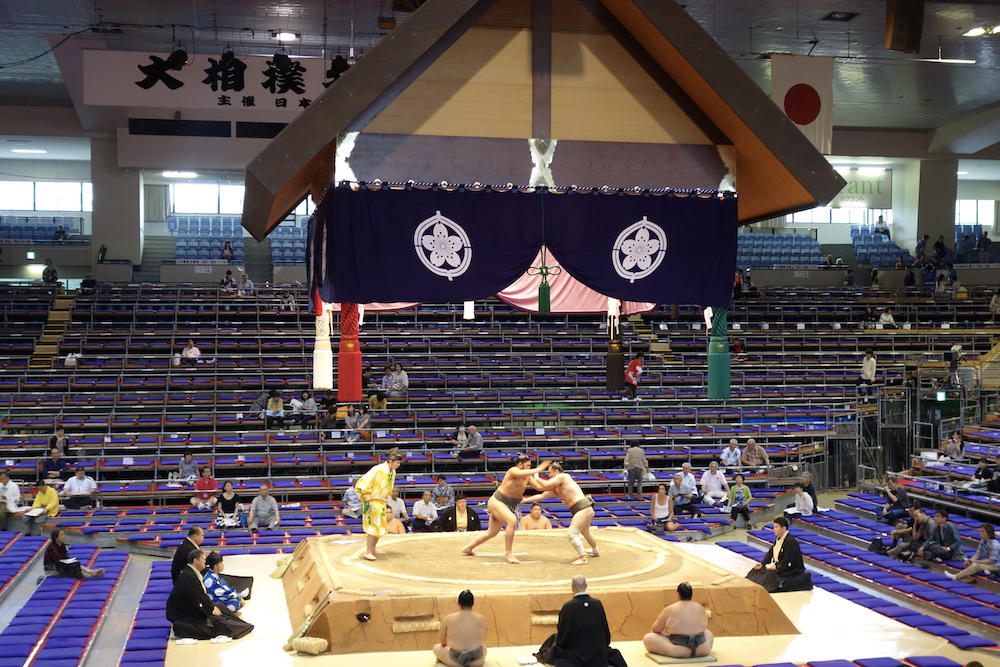
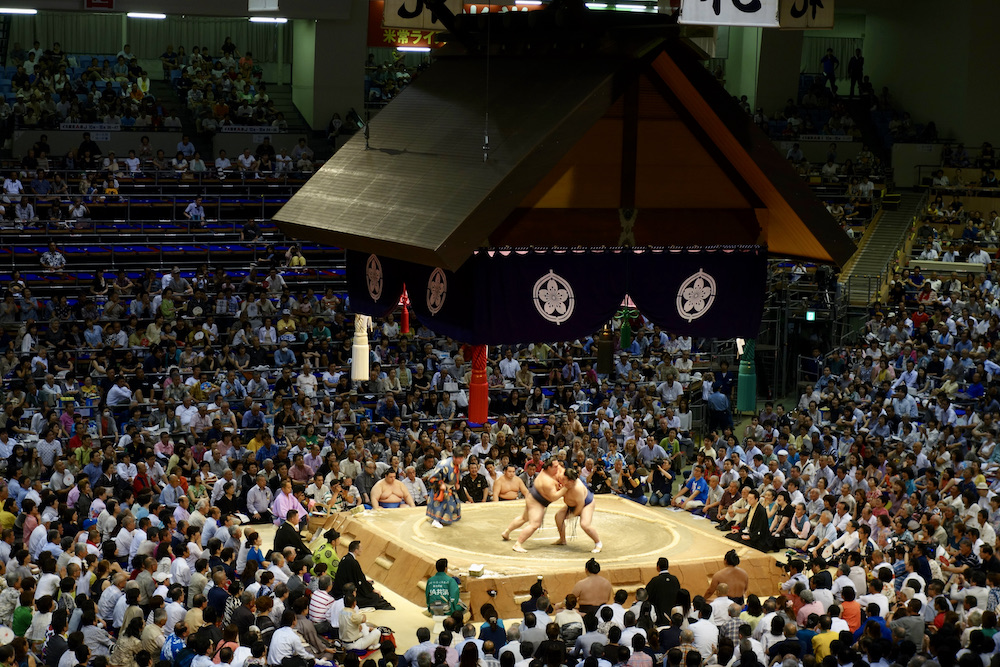
Sumo wrestling is a competitive contact wrestling sport that’s said to have started thousands of years ago. The whole game involves each wrestler trying to force his opponent out of the ring, or to simply get any body part of his opponent (besides the soles of his feet) to touch the ground.
It originated as a form of entertainment for the Shinto deities, and formed part of a religious ceremony during the Heian period. Sumo also became a form of royal entertainment during this time. Sumo then evolved to become part of the military regime, and even became part of samurai training during the Kamakura Period. During the Edo period, sumo tournaments began to take shape, with the first sanctioned tournament happening after the year 1684.
The Grand Sumo Tournament
Each match can last seconds, or just a few minutes — blink, and you might miss it. But there’s really no other way to describe the way the bodies collide, or how the wrestlers try to outwit their opponents. Sometimes it’s not all about the size: you’d be surprised to see how the smaller wrestlers use their skills to bring larger wrestlers to their knees! However, many sumo wrestlers still place emphasis on weight gain, especially since there are no weight restrictions or classes in a match.
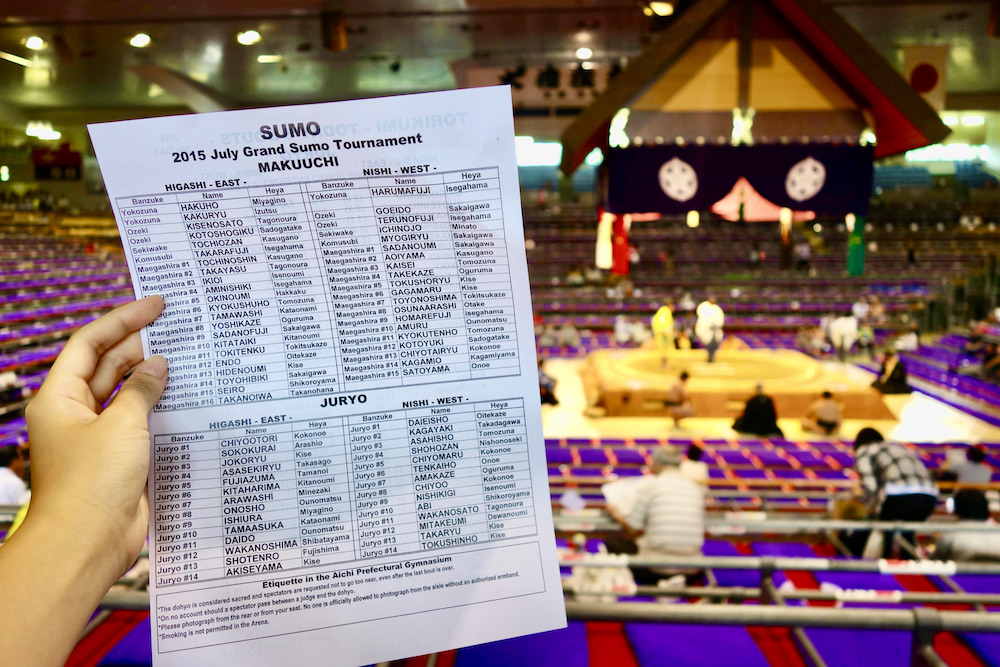
The lowest-ranked wrestlers start fighting at 8.30am; the second division Juryo matches start at 3pm; and the top division Makuuchi matches start at 4pm — with the highest-ranked wrestlers battling it out just before 6pm. This schedule remains the same for the first 14 days of the tournament, and is brought forward by 30 minutes of the last day to allow for the victory ceremony at the end. Each ticket will allow you entry for the entire day; however, we recommend attending between 3.30pm and 6pm, where the best action takes place.
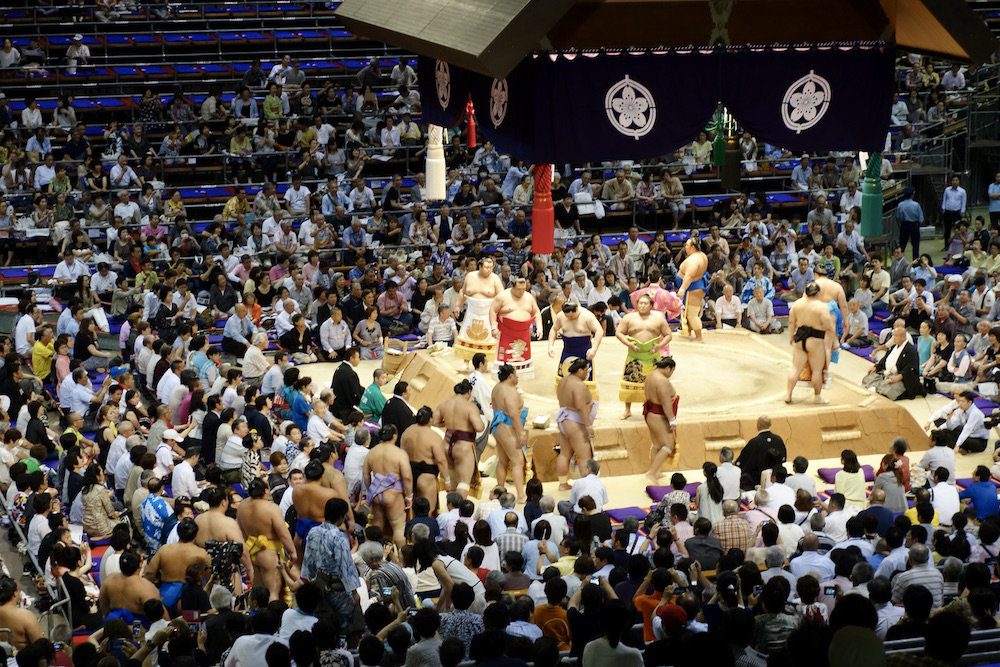

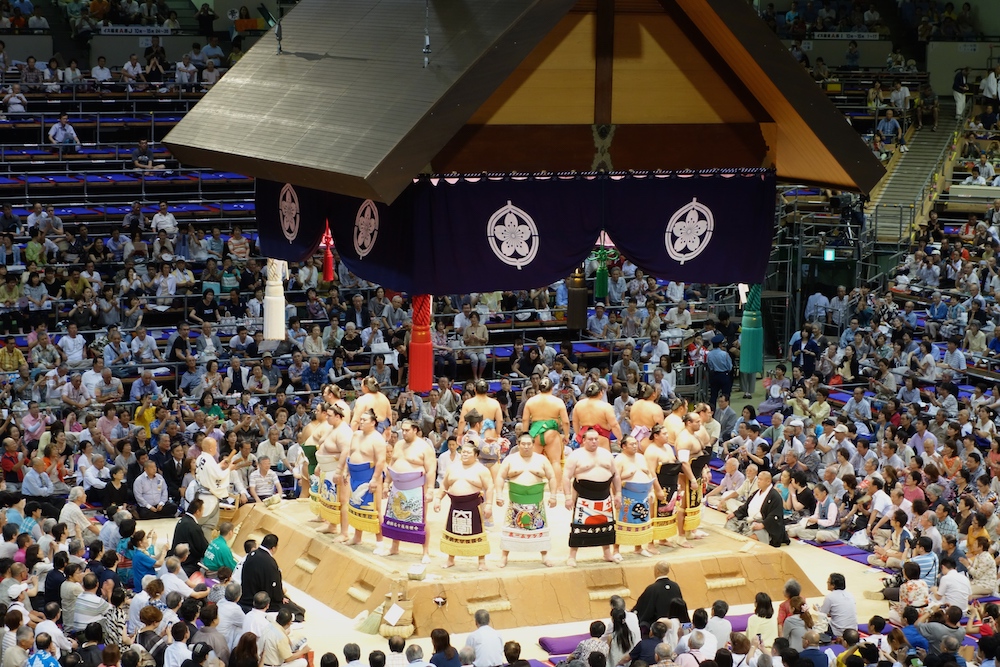
If you reach before each division begins, you’ll be able to witness the Dohoyo-iri ring entering ceremony. The wrestlers don their silk loincloths (Mawashi), and perform a ritual. They’ll clap and rub their hands together to get the attention of the Gods, and to kickstart the cleansing process. Before leaving the ring, they will move their Mawashi to show that they do not have any concealed weapons on them.
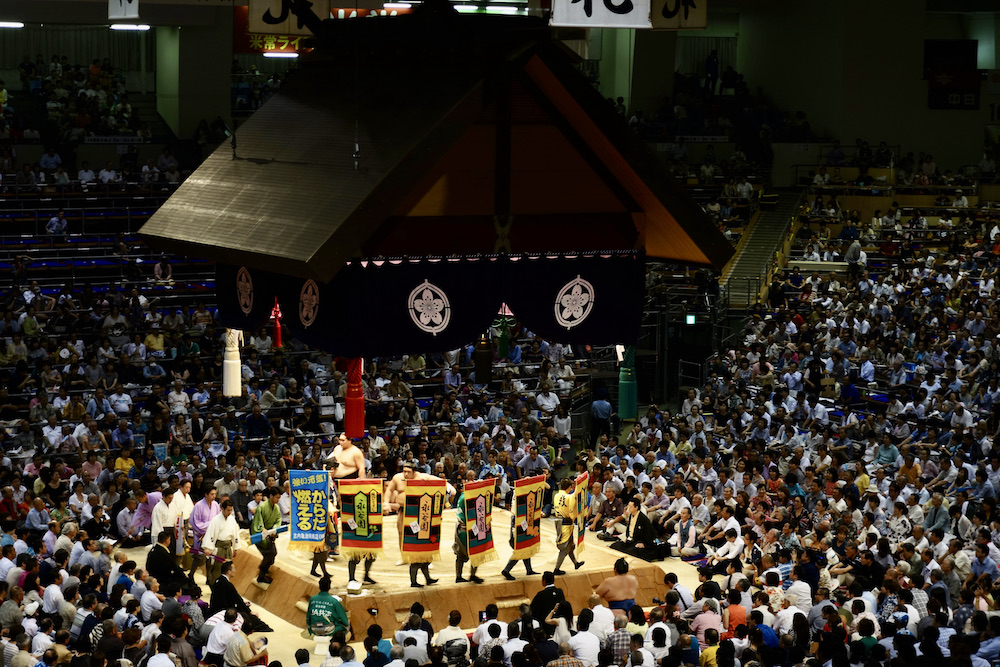
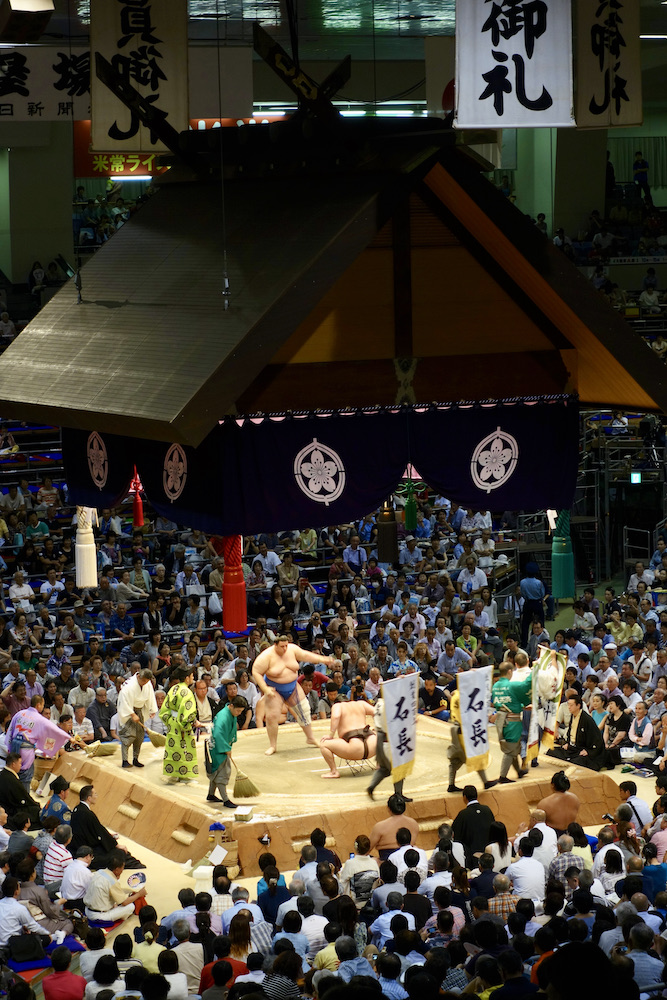
You know how football stadiums display the names of sponsors prominently along the stands? Well, sumo wrestling takes it back a notch, and displays this advertising in the form of old-school banners that are displayed before the afternoon higher-ranking divisions start.
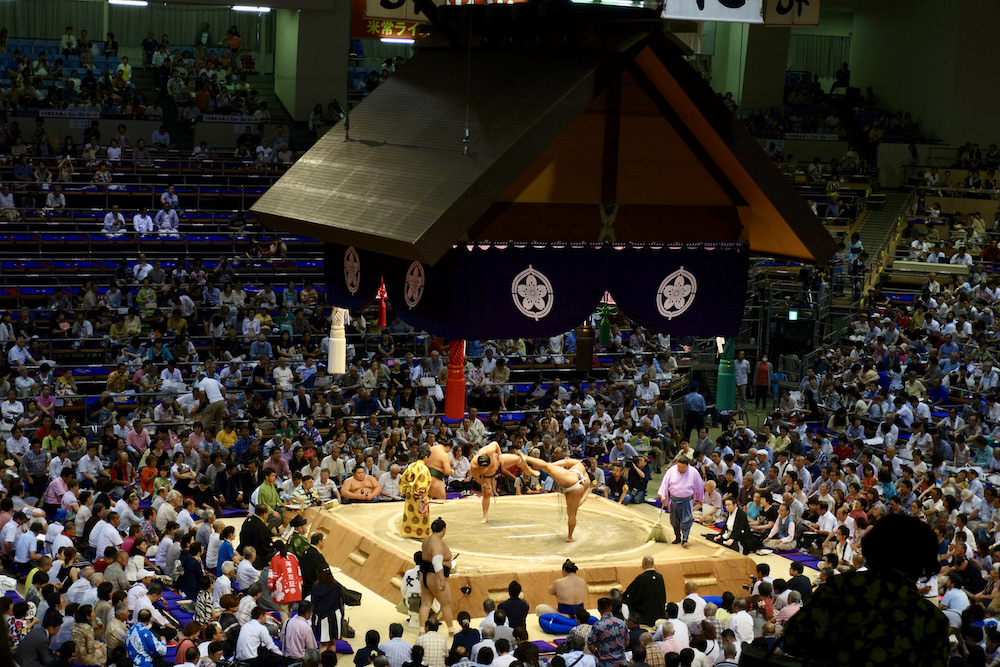
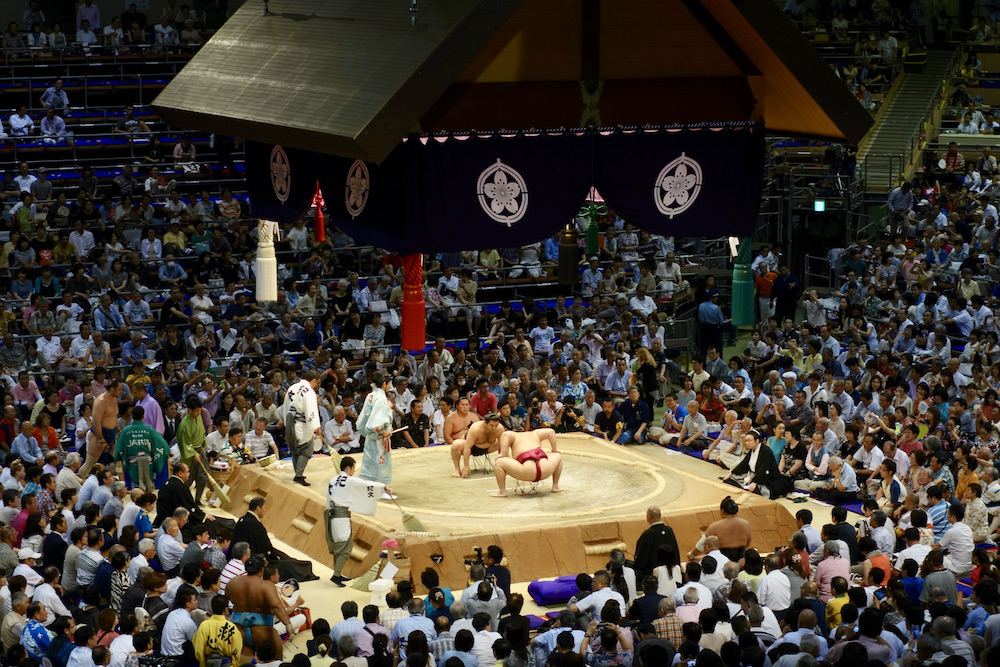
Sumo wrestling, as a whole, is very ritualistic. Before each match, the wrestlers go through a ritual of stretching, squatting, and salt throwing. This ritual can last for a maximum of five minutes, compared to the match that can be over in just a split second. When it’s time for the match to start, both wrestlers will put one of their fists on the ground. The match only begins when both wrestlers have both fists on the ground.
The wrestlers fight in a ring (“Dohyo”), which is made out of bales of rice straw buried in clay. In the middle of the ring, a medley of elements — dried squid, washed rice, salt, dried chestnut, torreya nuts, and seaweed — are buried, topped with sake. According to tradition, and the rules of sumo, no women are permitted to step foot in the ring, which is considered to be sacred by many.
After each match ends, the champion will receive Kensho, which are envelopes that contain prize money from the sponsors of the match. This money is on top of any official prize money given during the victory ceremony. Pretty sweet, huh.
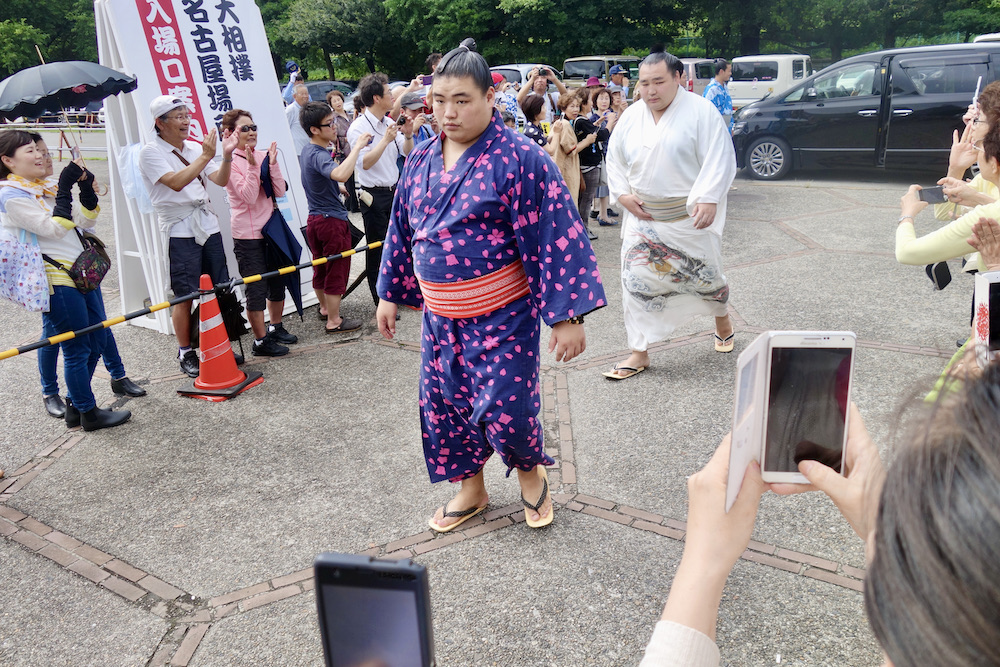
If you’re lucky, you might even be able to catch a glimpse of the sumo wrestlers arriving for their matches!
How to get tickets for the Grand Sumo Tournament
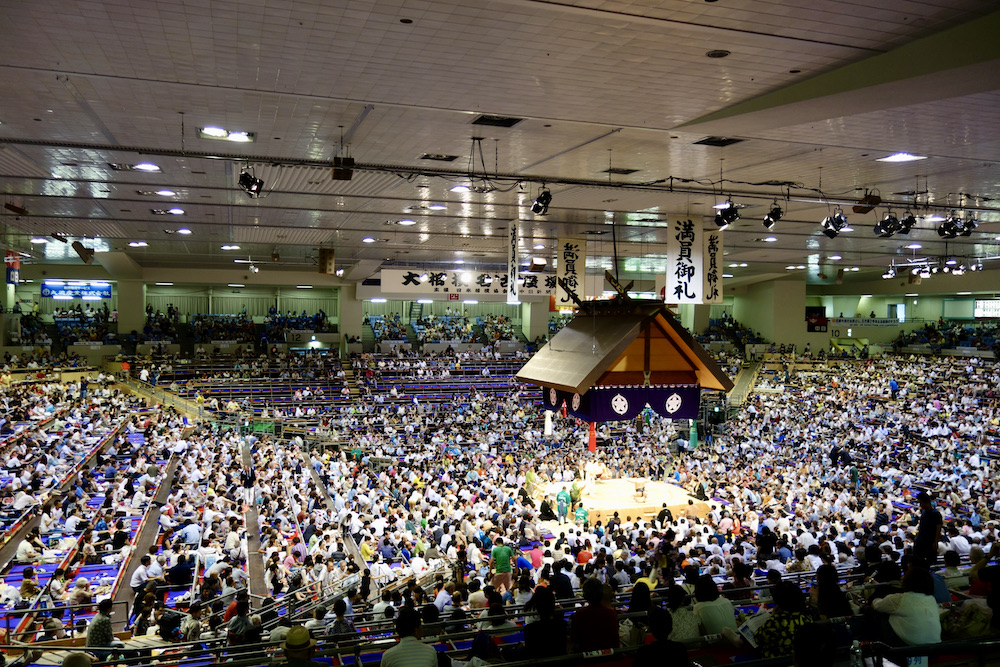
If you’d like to see these warriors in action, plan your trip to coincide with one of Japan’s grand sumo tournaments. Each year, there are six of these tournaments (“Honbasho”), each of which lasts a total of 15 days. They are held during January, May, and September in Tokyo; during March in Osaka; during July in Nagoya; and during November in Fukuoka. We managed to clinch tickets for the grand sumo tournament in Nagoya, which is about 100 to 120 minutes away by train.
Tickets are released one month before each tournament starts, and are sold via Ticket Oosumo. If you didn’t manage to secure tickets beforehand, you can always try your luck with snagging Same Day Ticket, which are sold at the stadium’s box office every day of the tournament from 8am. Each person can only buy one ticket, so fastest fingers first!
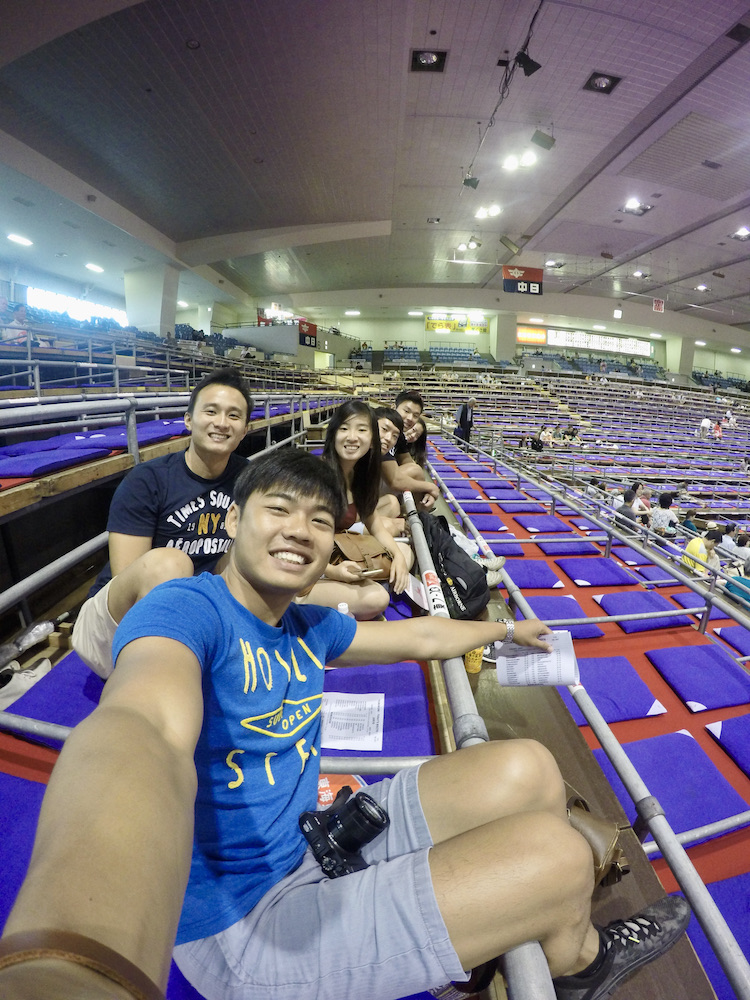
Choose between a few seat categories: ringside seats offer literal front-row seats to all the action, and are notoriously hard to get. You’ll probably have more luck with box seats — do note that you’ll have to buy a minimum of four seats. These seats have no backrest and, in true Japanese style, require you to take your shoes off before sitting on the cushions. Otherwise, go for the stand (chair) seats, which lie in the cheapest category.
Attending the grand sumo tournament is a great way to spend a day — and is well worth the day trip from wherever you’re staying. Grab a beer, and enjoy the experience!
